It took many, many years before I finally returned to visit Claude Monet’s house in Giverny. I had fond memories of it but never found the time to go back as an adult. With so many little escapes around Paris, Chantilly, or Fontainebleau, I let too much time pass before returning to this charming corner of Normandy. Perhaps that’s just as well, as it allowed me to appreciate the visit and the house even more. After all, when you’re younger, you don’t pay much attention to certain details that I couldn’t help but notice now: the varieties of flowers in the garden, the choice of colors on the walls, or the earthenware in the kitchen…
Visiting Giverny at the end of June made me feel like I had finally come at the perfect time.
I’ve already shared my impressions of this bucolic garden, which changes with the seasons, in this article. Now, I’d like to share my thoughts on an important aspect of the estate: the home, refuge, and studio of one of the greatest painters who ever lived.
Visiting the homes of great individuals, especially creative people like artists or writers, is always intriguing. I enjoy stepping into their intimate spaces and observing what may have influenced and inspired them. I always take plenty of photos and notes because their vision often prompts new ideas and reflections. This visit to Giverny certainly exceeded my expectations!
This imposing and captivating building is approached via a path lined with multicolored flowers, instantly transporting us into Monet’s paintings. Before you even catch sight of the famous pink and green house, the path feels like a journey through a field of flowers—a luminous, airy, and vividly colorful meadow. As we arrive at the house, we are in good spirits, welcomed by the sumptuous simplicity of these unpretentious, rustic blooms.
The charm of an authentic country house
And here it is, this simple yet distinctive home with its pink hue, shutters, trelliswork, and bright green balustrade—all restored by Gerald Van der Kemp, former director of the Claude Monet Foundation. Blue-and-white earthenware pots add a soft touch to the overall effect, guiding the way up the steps to the interior. Everything is eye-catching, surprising but not jarring. The house exudes taste, with a refined simplicity and no trace of ostentation. Paintings by the great masters whom Claude Monet admired are displayed side by side. There’s something both touching and sacred about entering a place where time has stood still to preserve the memory of its owner.
The interior exudes a strong country charm, yet it feels modern in certain ways. This modernity is reflected in the materials used, such as rattan and bamboo, and, most notably, in the choice of colors: green paired with lavender, a turquoise-blue chair set against classic wallpaper. The upstairs bedrooms are more subdued than some of the downstairs rooms, with softer colors, but they offer a breathtaking view of the garden. We pause for a few minutes at the master bedroom window, and it’s clear that in such a setting, one cannot help but be inspired to paint. All you need is the talent.
The dining room and kitchen, central rooms in Claude Monet's home
But it’s the yellow of the dining room (and reception room) where the Monet family gathered daily that is most astonishing. This bright, cheerful chrome yellow stimulates the senses. The room, vast and with a country charm, is combined with a bold color that captivates so many visitors (the dining room and kitchen must be among the most photographed rooms in the house). You can clearly see the influence of a man who worked with color. A large table sits at the center of the room, used to welcome friends as well. Two imposing china cabinets add a touch of grandeur, while the numerous Japanese prints bring an exotic flair. I particularly liked the blue and white checkered cushions on the chairs.
The tour concludes with a room that we now consider one of the most important, though it held little significance for the painter: the kitchen. Yet, this is my favorite place in the house (as it is for many others). It perfectly embodies a true French country kitchen and serves as a real source of inspiration. The kitchen is an extension of the dining room, designed with practicality and common sense, without losing any of its charm.
The space features copper pans, a stone sink, a superb kitchen range highlighted by earthenware tiles, and large, beautiful doors that likely concealed shelves stocked with provisions.
Other buildings on the estate are not open to visitors, as they house the Foundation‘s offices. The painter’s studio now serves as the store, where I found a number of very interesting books. My visit at this time of year was filled with poetry, and I’m certain the same charm will prevail in autumn. So, don’t hesitate to spend a day at Claude Monet’s house in Giverny—you’ll leave enchanted.


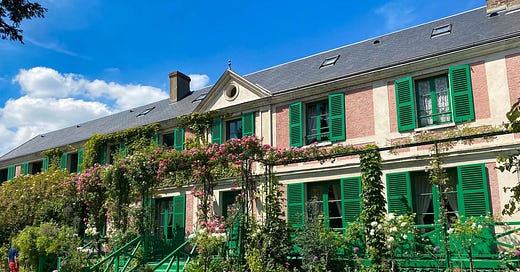



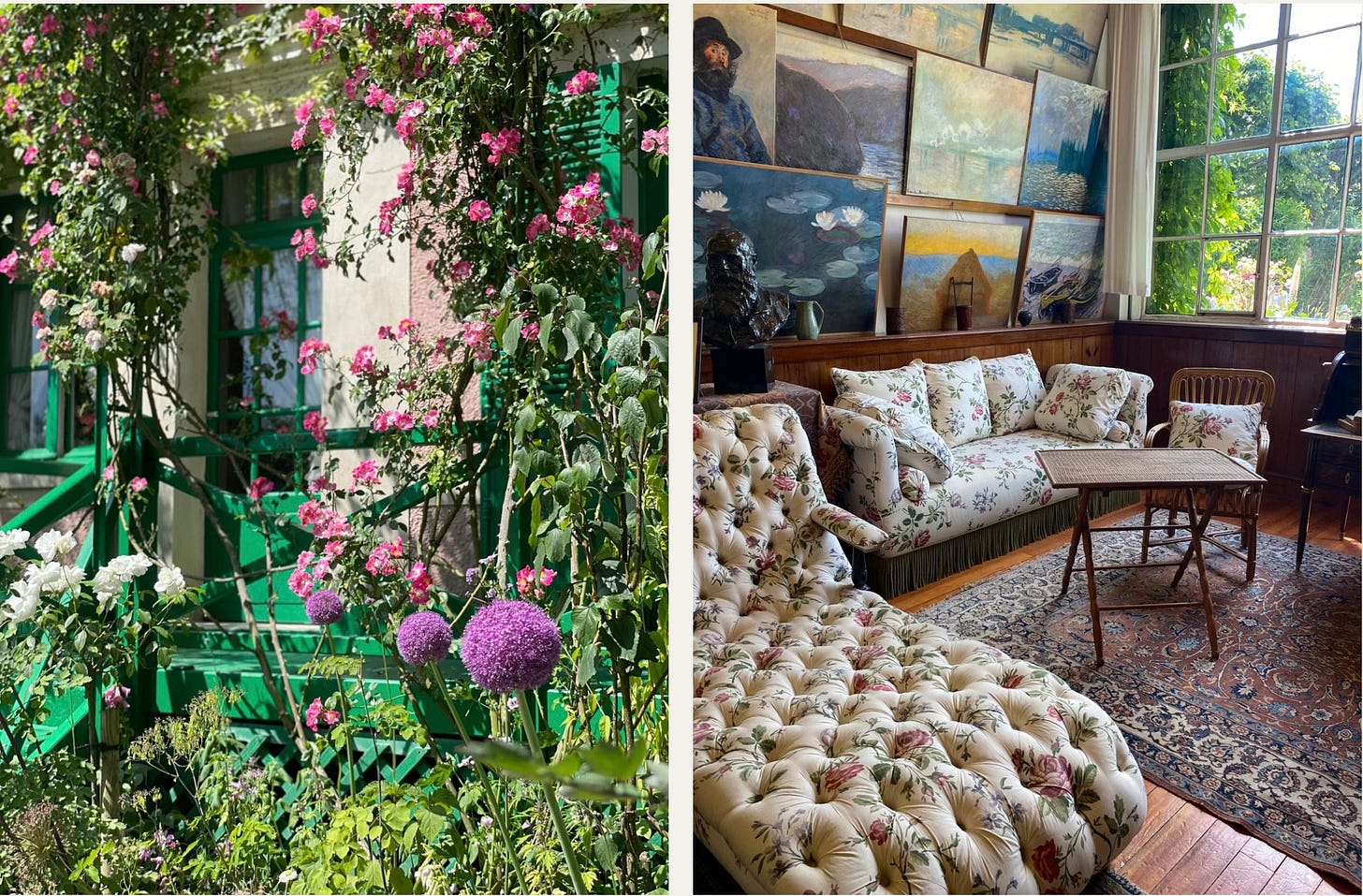


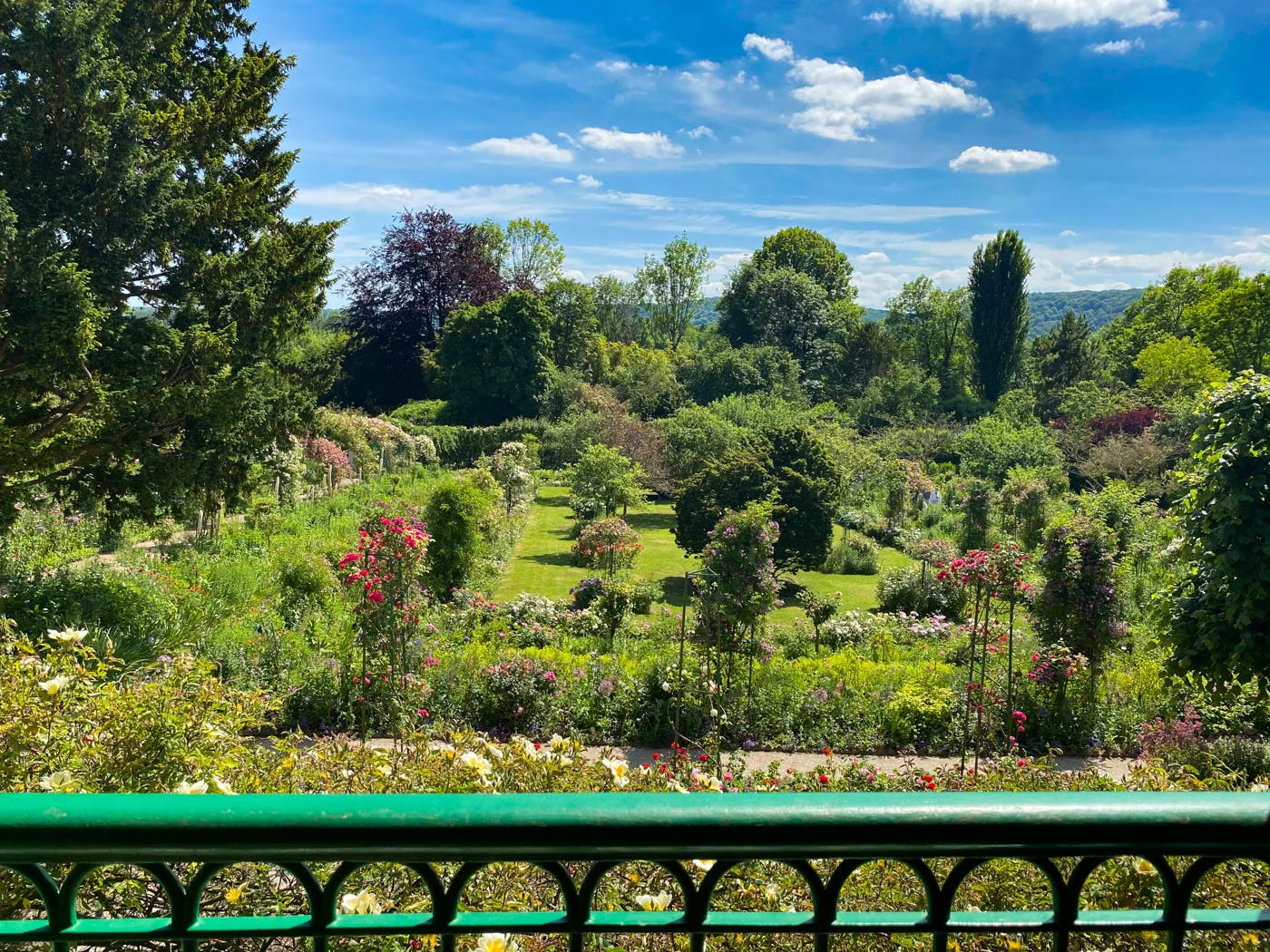
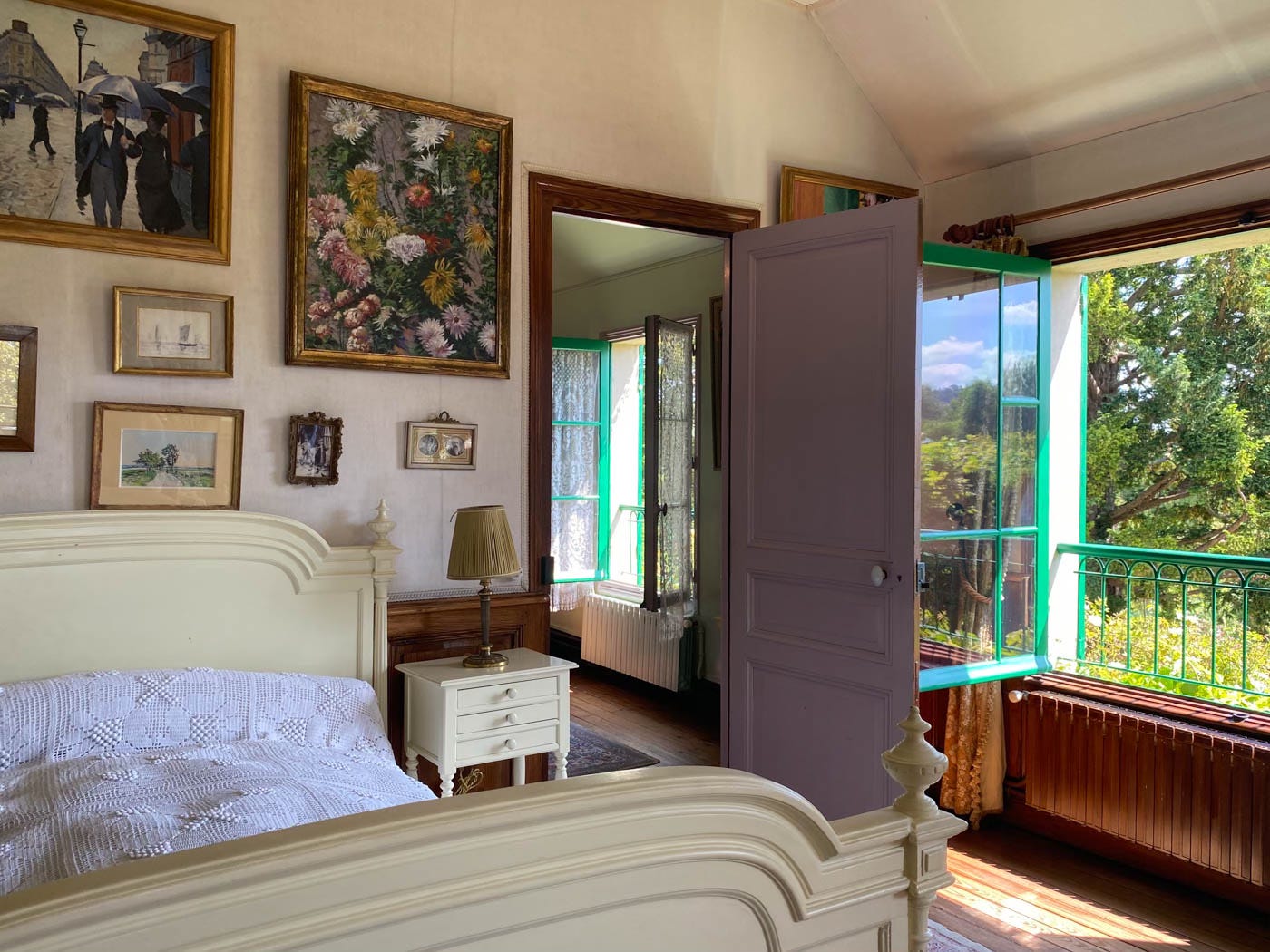
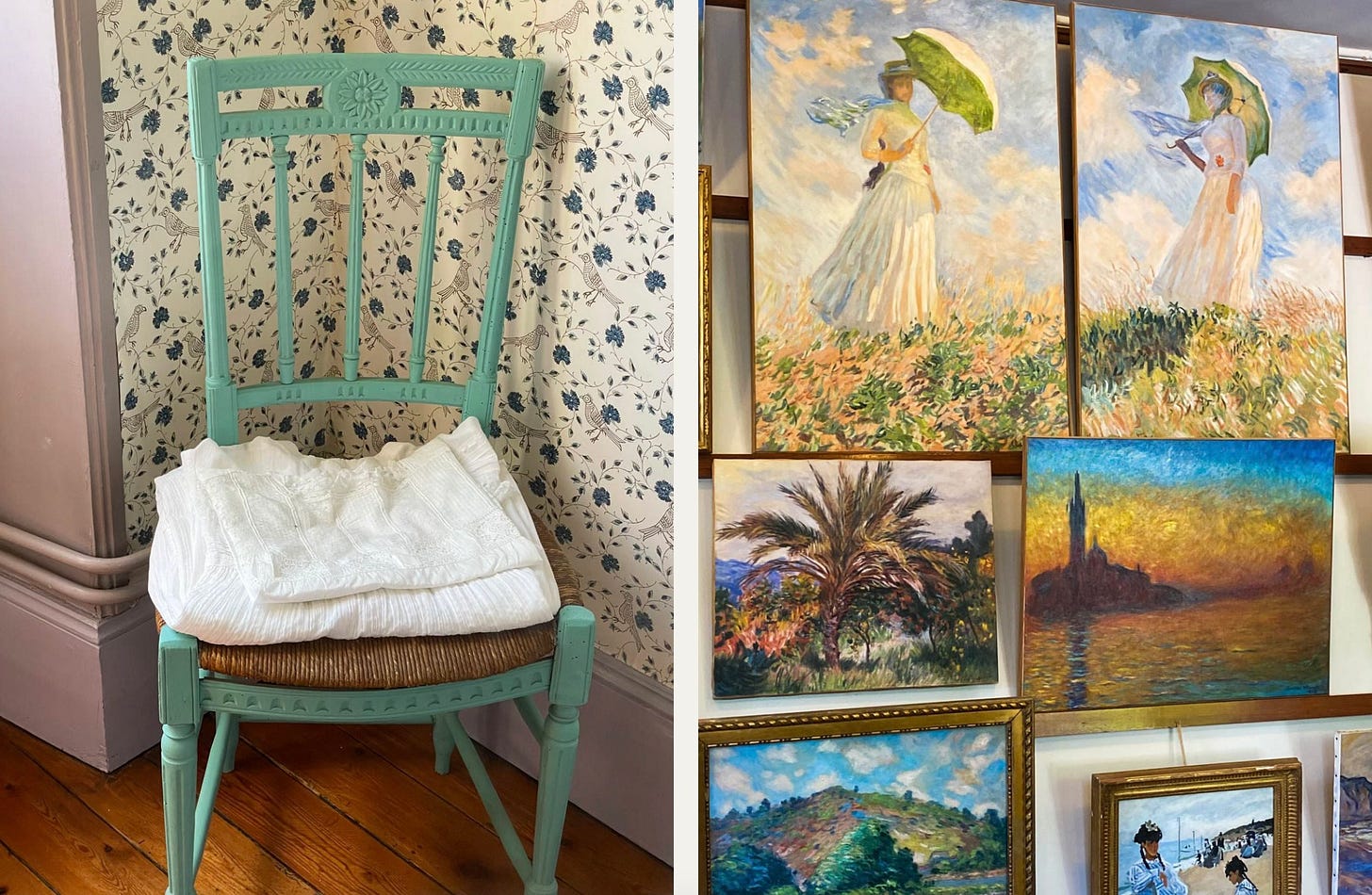
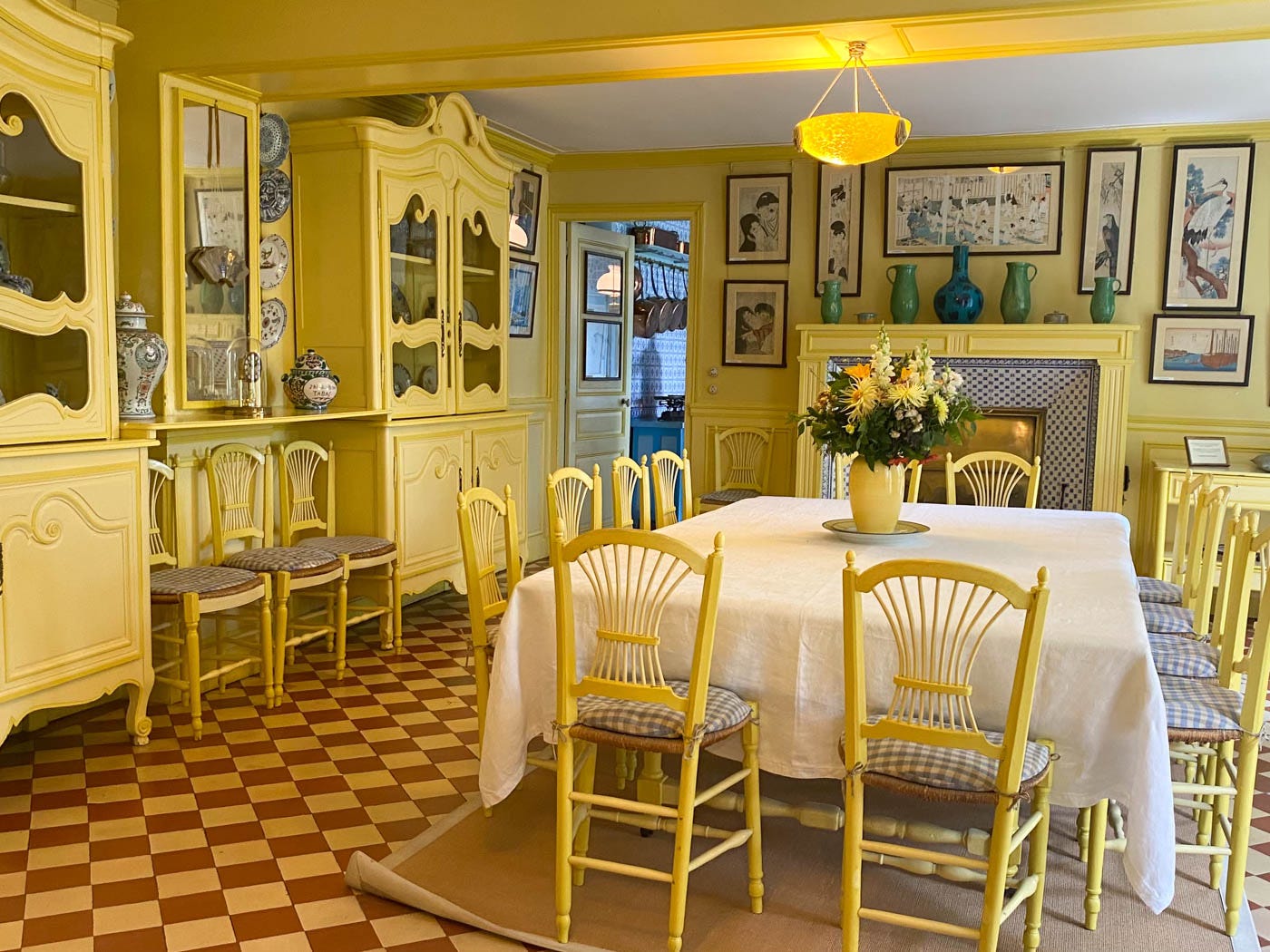
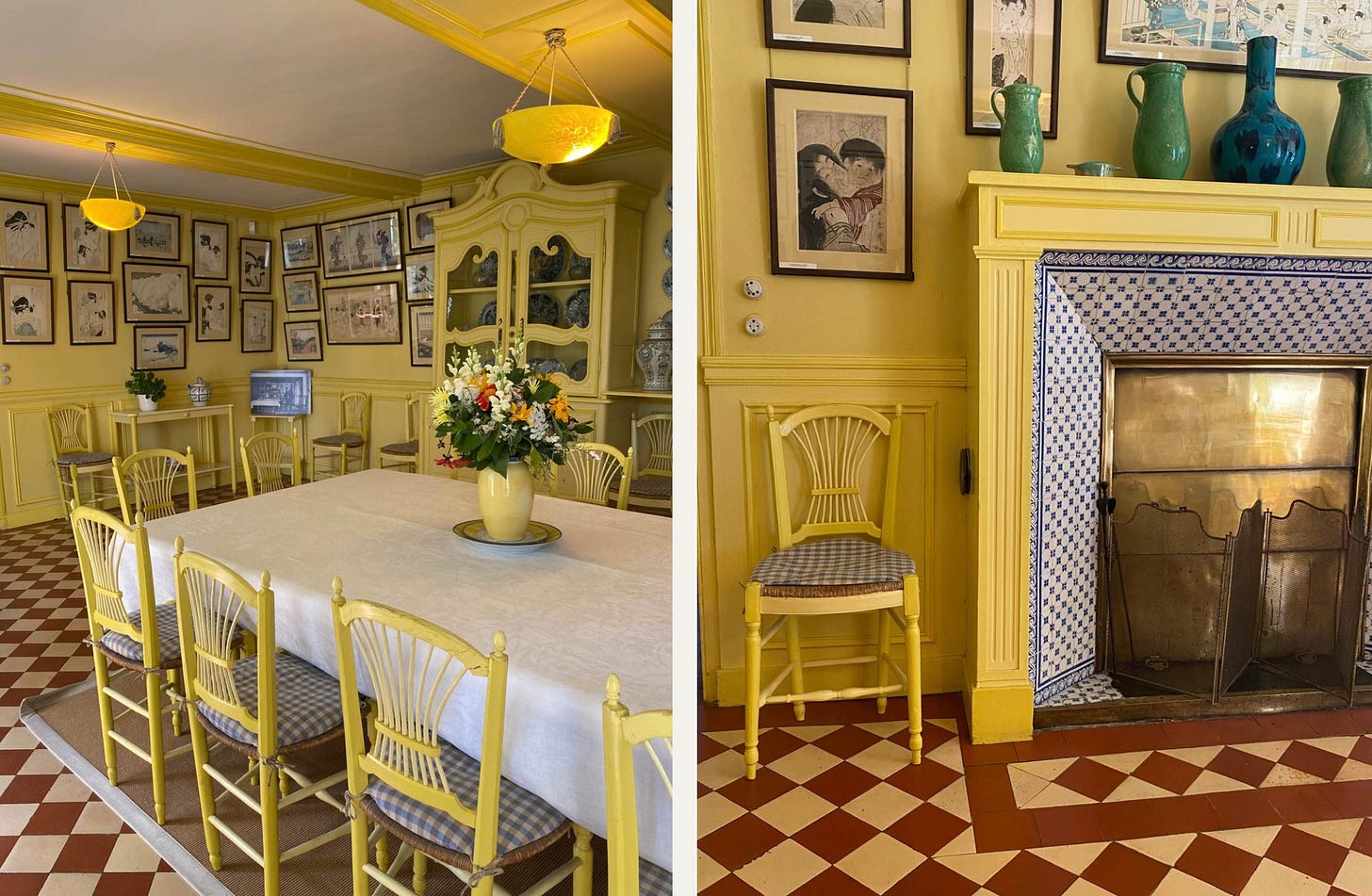
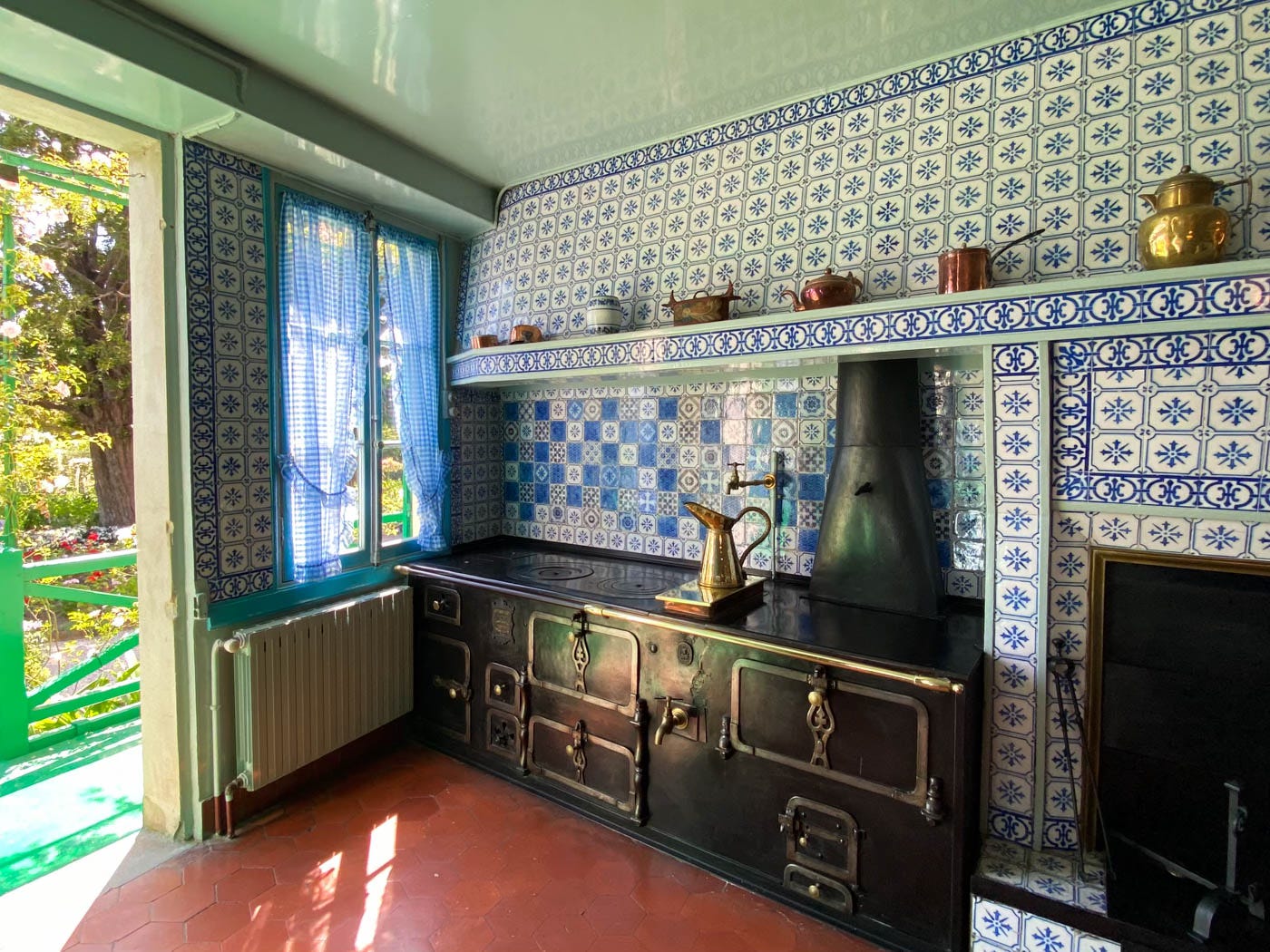

I spent Christmas in Normandy right near here one year, and my only regret was that the house is closed at that time of year. Thank you for this beautiful tour.
Beautiful I love the coloured woodwork, particularly the blue and yellow. It suits the house perfectly without being too cutesy.
Like you I really need to visit as an adult. My childhood memories are hazy and I definitely didn’t appreciate it as much as I should have!